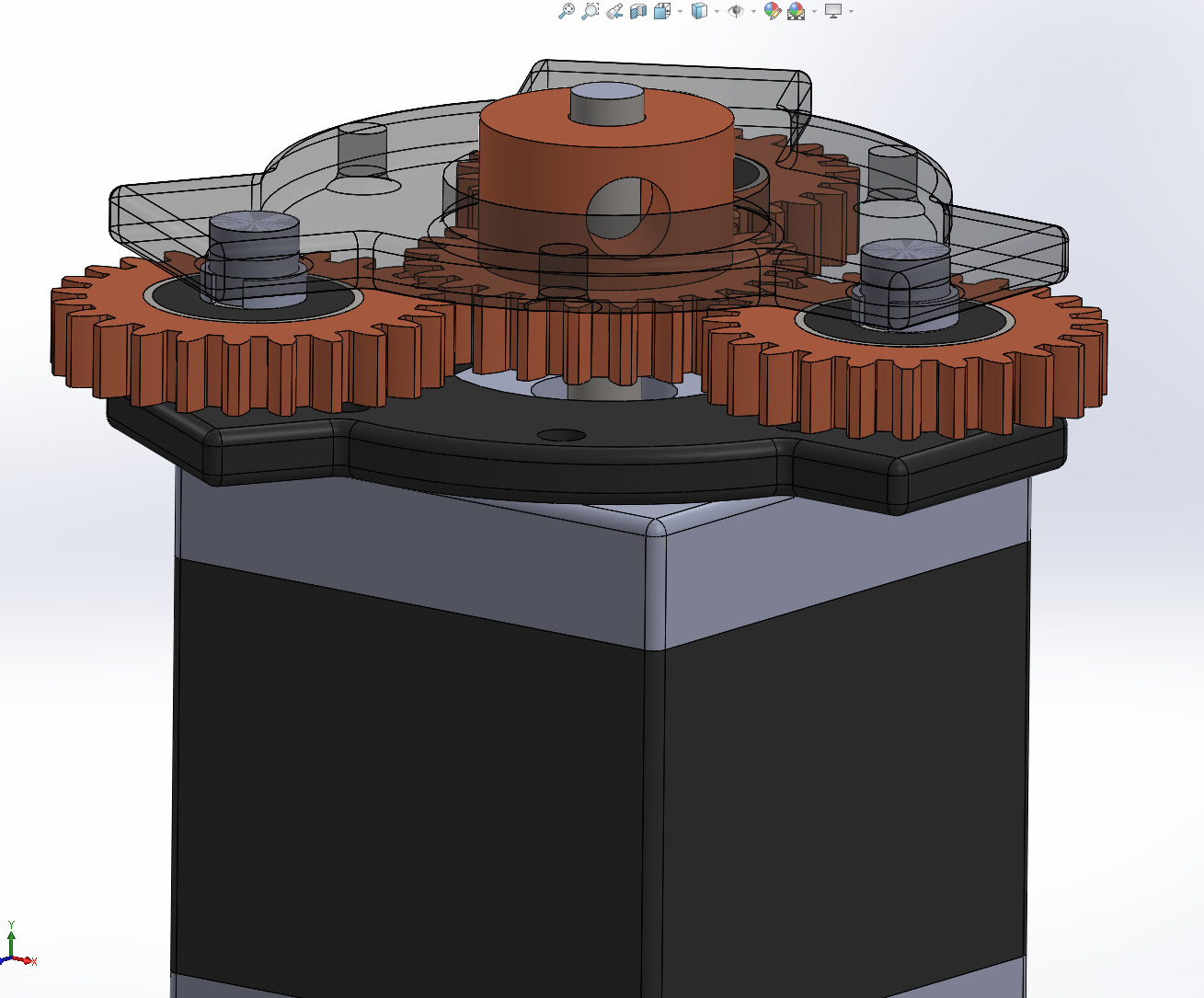-
Introduction
06/17/2020 at 02:43 • 0 commentsHello!
Welcome to my project. Here I want to spend a brief moment to outline some of the project goals, and describe a few of the meta parameters that I'm working with.
This robotic arm is entirely (well, almost entirely) designed with SolidWorks and is my foray into complex mechanical part design. I have been creating 3d printable things for many years, but some of the nuances of moving parts have eluded me.
So far, some of the skills I have learned as a result of this Robotic Arm project include:
- Gearbox design and how to distance everything
- How to affix a shaft to a bearing
- How to press-fit a bearing into a 3d printed part (and what a reasonable tolerance for such an activity looks like)
- Common interfaces and captive-nut designs for connecting parts together
- Using fillet makes things look instantly cooler
- Introductory SolidWorks
I'm sure there are even more takeaways, which I shall reflect on in the future.
A secondary (but equally important) goal is to improve my own ability to be an effective communicator. In the spirit of that goal, I will be creating more videos and documenting a finer grain of my project than I traditionally have. That being said, I am getting a late start. So I will be speed running the first few log posts.
As far as functionality goes, I am not expecting this machine to be particularly useful "in the field". It's intended life purpose is to employ advanced mathematics which enable smooth path-following and route finding to, um, point a camera phone in a specific direction. It's... it's a gimbal. But a very precise gimbal.
This is an exciting project for me and I hope to share the interesting journey both past and future.
-
Axis 1 - Part Design - Planetary Gearbox
06/17/2020 at 02:28 • 0 commentsAxis 1 - Planetary Gearbox - 3:1 Ratio
In order to control the center of gravity/mass, I wanted the first level to be a planetary gearbox. In this way, I'm starting out with the weight being exactly centered along the shaft of the motor.
Spoiler alert: I forsake this dream of perfectly balanced construction a bit later.
The sun and planet gears are 24T and the annular gear is 72T. Their powers combined create a ratio of 3:1. Paired with my NEMA17 400-step stepper, this will give me an accuracy of +/- 0.3 degrees of resolution. Is that good? Ahh I'm not sure. But we can always revisit this part later!
Mounting Strategies
The sun gear attaches to the motor through a standard set screw. So far I have managed to make Axis 1, Axis 2, and Axis 3 consistently use 6mm set screws. So that is the "standardized" size and it applies here.
The planetary gears have a press-fit bearing installed. Apparently the tolerances needed for a successful press fit are just to make the bore exactly the expected OD of the bearing. My printer is generally off by +/- 0.15mm so this produces a slightly smaller hole then expected. As a result, you can use a press to snugly push the bearing in place.
Lastly, I created some spacers for the top and bottom, to keep the bearing in place.
Reflection: If I were to design this again, I would try hard to avoid the spacer design. In fact, I would probably play around with custom shaft design which has built-in spacer. Will likely work much better.
All of this is sandwiched between two standard planetary gear mount structures. The bottom structure has a NEMA17 mounting holes, as well as some captive nuts on the underside which the top structure bolts down into. The result is this lovely and very strong planetary gearbox.
 Josh Cole
Josh Cole